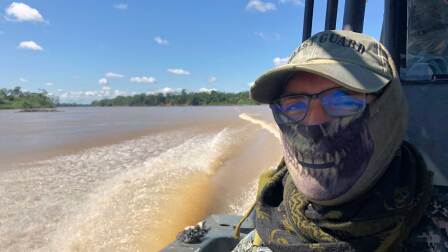Back to Show
Earth Focus
Killing Bees: Are Government & Industry Responsible?
Honey bees, the essential pollinators of many major U.S. crops, have been dying off in massive numbers since 2006. This threatens the American agricultural system and the one in 12 jobs that depends on it. There is growing evidence that a new class of pesticides -- nerve toxins called neonicotinoids, which are used on many U.S. crops like corn -- may be toxic to bees.
The Environmental Protection Agency allowed neonicotinoids on the market without adequate tests to determine their toxicity to bees. Environmentalists want neonicotinoids banned until safety tests can be conducted. While the U.S. government is slow to act and neonicotinoid sales reap billions for the chemical industry, bees continue to die.
Support Provided By
Season

24:28
Los Angeles is one of the biggest biodiversity hotspots in the world, despite its smog, urban sprawl and snarling freeways.

25:44
Communities and innovators all over the world are creating new sustainable food sources that are resilient to climate change and growing populations.

25:44
Anticipating future water needs, two regions on opposite sides of the world turn to technology for answers.

25:26
Two cities, San Francisco and Freetown, brace for climate change using vastly different methodologies.

25:58
Droughts and floods are driving many people away from their rural, farming communities into big cities.

25:30
Forecasts are dire for Louisiana to experience the second-highest sea level rise in the world. How is the region adapting?

26:40
“Vanishing Coral” presents the personal story of scientists and naturalists who are working with local communities to protect coral reefs that are being destroyed by warming seas, pollution, and destructive fishing practices.

33:46
"Earth Focus" looks at three countries on the new fracking frontline: South Africa, Poland, and the UK.











